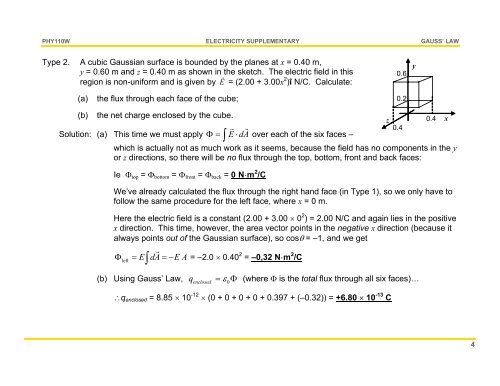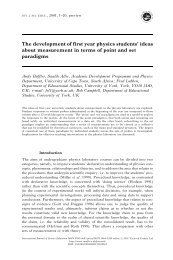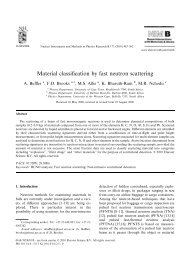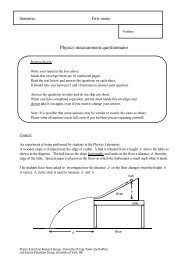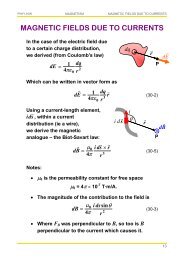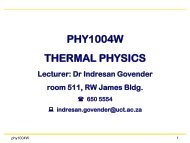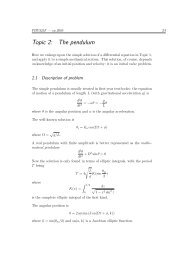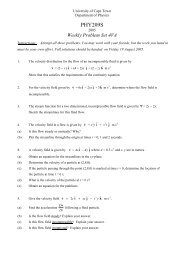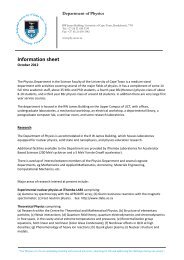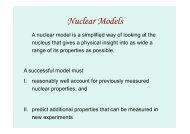Flux and Gauss' Law
Flux and Gauss' Law
Flux and Gauss' Law
Create successful ePaper yourself
Turn your PDF publications into a flip-book with our unique Google optimized e-Paper software.
PHY110W ELECTRICITY SUPPLEMENTARY GAUSS’ LAW<br />
Type 2. A cubic Gaussian surface is bounded by the planes at x = 0.40 m,<br />
y = 0.60 m <strong>and</strong> z = 0.40 m as shown in the sketch. The electric field in this<br />
region is non-uniform <strong>and</strong> is given by E = (2.00 + 3.00x 2 )î N/C. Calculate:<br />
0.6<br />
y<br />
(a)<br />
the flux through each face of the cube;<br />
0.2<br />
(b) the net charge enclosed by the cube.<br />
<br />
Solution: (a) This time we must apply Φ = E ⋅dA<br />
over each of the six faces –<br />
∫<br />
z 0.4<br />
0.4<br />
which is actually not as much work as it seems, because the field has no components in the y<br />
or z directions, so there will be no flux through the top, bottom, front <strong>and</strong> back faces:<br />
Ie Φ top = Φ bottom = Φ front = Φ back = 0 N⋅m 2 /C<br />
We’ve already calculated the flux through the right h<strong>and</strong> face (in Type 1), so we only have to<br />
follow the same procedure for the left face, where x = 0 m.<br />
Here the electric field is a constant (2.00 + 3.00 × 0 2 ) = 2.00 N/C <strong>and</strong> again lies in the positive<br />
x direction. This time, however, the area vector points in the negative x direction (because it<br />
always points out of the Gaussian surface), so cosθ = –1, <strong>and</strong> we get<br />
Φ<br />
left<br />
= E∫ dA =−E A = –2.0 × 0.40 2 = –0,32 N⋅m 2 /C<br />
(b) Using Gauss’ <strong>Law</strong>, qenclosed<br />
= ε<br />
0Φ (where Φ is the total flux through all six faces)…<br />
∴q enclosed = 8.85 × 10 -12 × (0 + 0 + 0 + 0 + 0.397 + (–0.32)) = +6.80 × 10 -13 C<br />
x<br />
4


